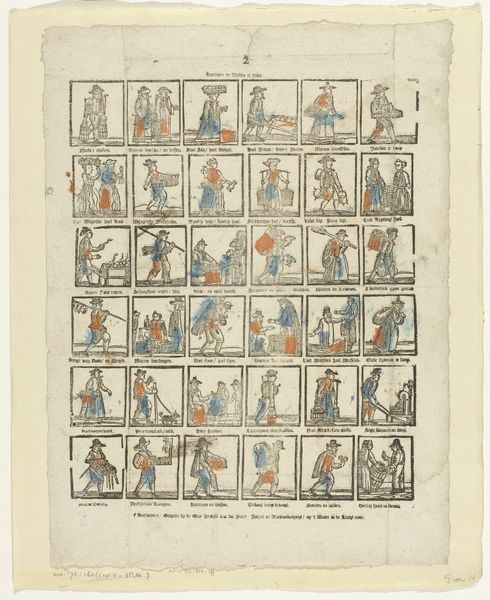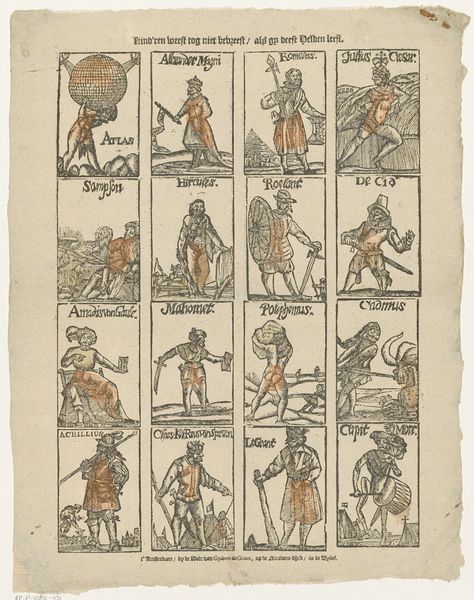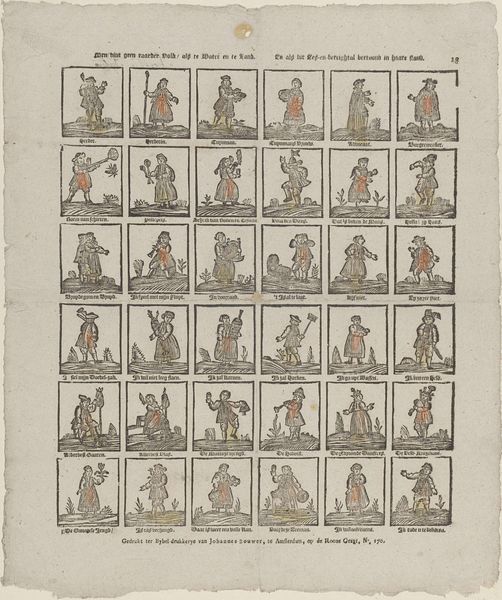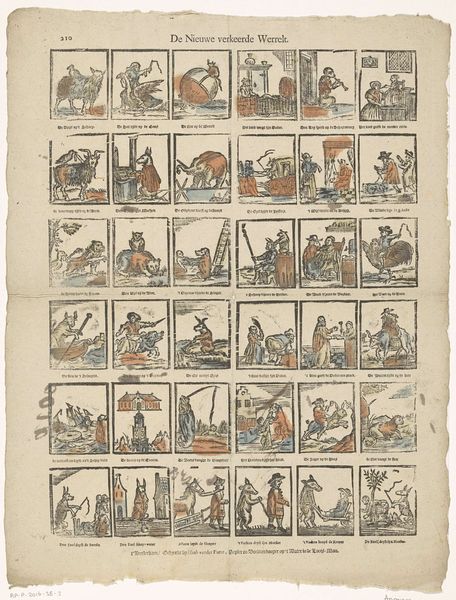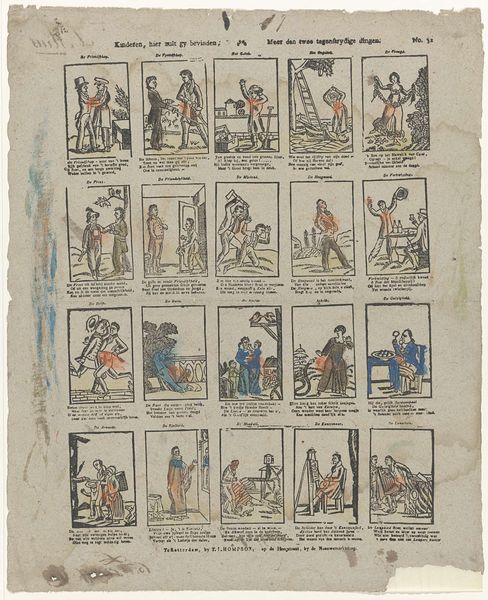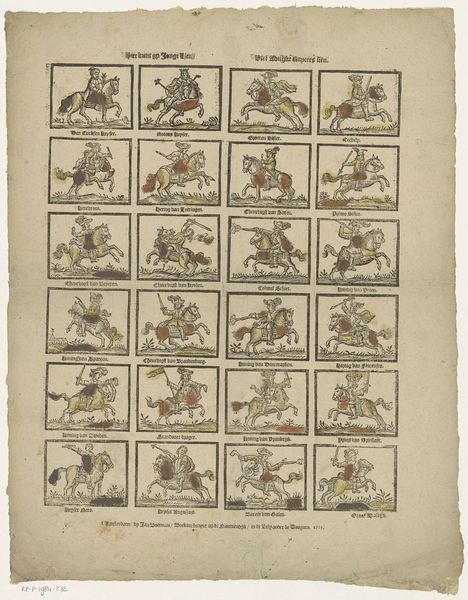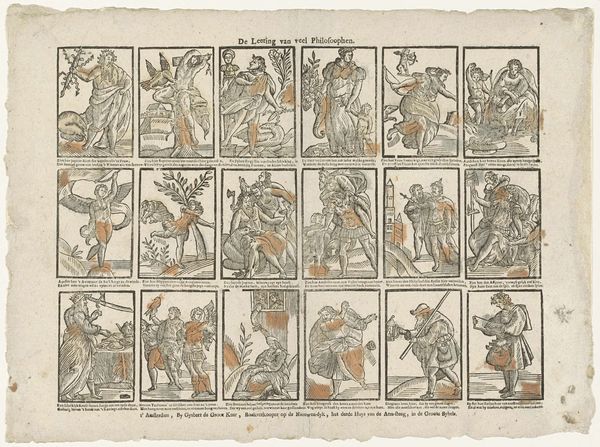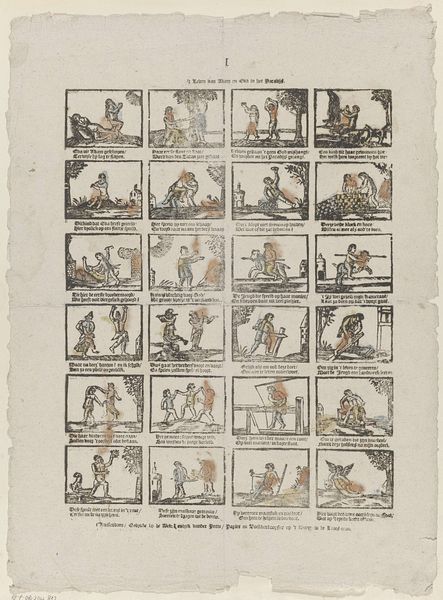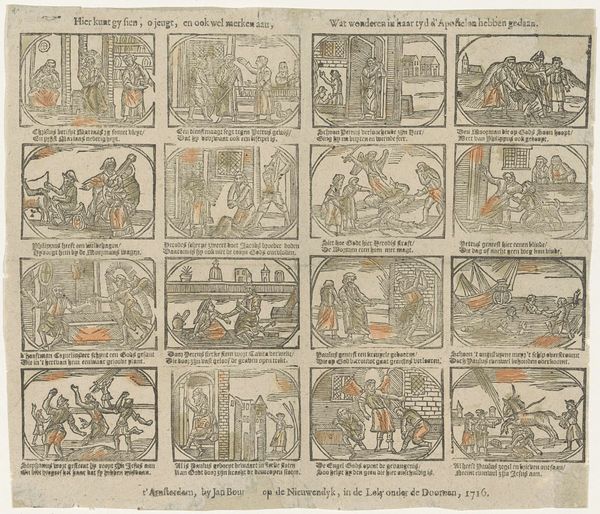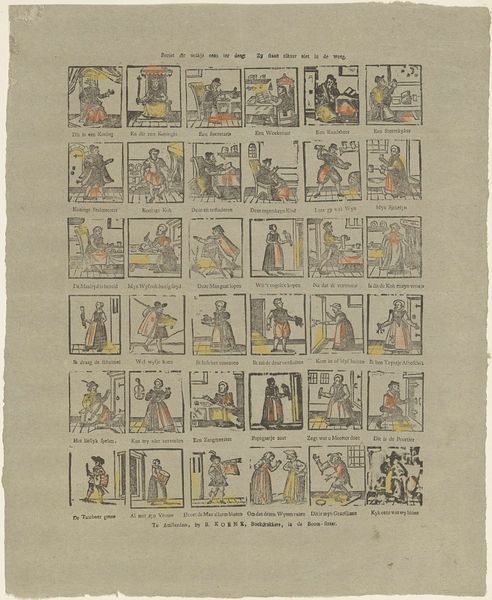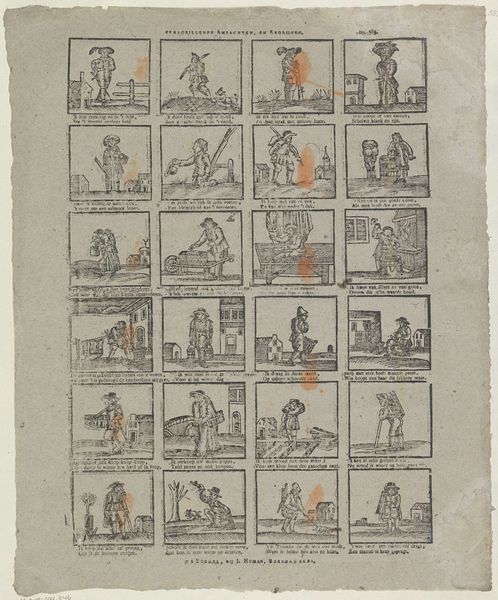
print, etching, woodcut, engraving
#
medieval
#
narrative-art
#
dutch-golden-age
# print
#
etching
#
folk-art
#
woodcut
#
genre-painting
#
engraving
Dimensions: height 340 mm, width 389 mm
Copyright: Rijks Museum: Open Domain
Curator: What a fascinating find we have here. This is "De jeugd die trap voor trap (...)", which translates to "Youth Step by Step". Created sometime between 1791 and 1812, the piece comes to us from Jacobus Thompson. You can see it's an engraving, etching, and woodcut, all brought together. What are your first thoughts? Editor: It feels like peering into a time capsule, doesn’t it? All these little scenes… They remind me of a slightly sinister cartoon, a child’s primer on how the world really works. The red accents give it this playful yet vaguely alarming tone. Curator: It's intriguing how Thompson employs these different printmaking techniques to create this kind of visual encyclopedia. This piece offers insights into social mobility. Notice the progression from mundane activities at the bottom towards positions of power. The images tell a sequential story, portraying steps toward what might have been seen as upward mobility in the Dutch context of the late 18th and early 19th century. Editor: Mobility is the core here. Each frame feels like a stage in some elaborate game, and there is so much life crammed in these small squares. The expressions are wonderful - each face could tell a complete story, though there is only enough room for snippets, tiny fragments of humanity. The layout is very contemporary too, somehow – not unlike comics, graphic novels, or a modern interface. Curator: And indeed, it has roots in folk art, targeting broad audiences, and we can imagine this hung on walls, offering some accessible narrative. Also, we cannot disregard the Dutch Golden Age aesthetics that echo. The choice of everyday life and narrative definitely gives it a down-to-earth quality despite any intended moral or lesson. Editor: There is that moral weight, but what intrigues me most is the storytelling that rises above the direct messages; each tiny figure appears locked in a drama and hints at wider worlds beyond this frame. The limitations of the format make the impression all the stronger. Curator: Exactly. Thompson transforms what could be didactic instruction into an open-ended series of character studies. Editor: It really does invite one to contemplate how seemingly simple acts form our paths. It nudges us to look deeper, and I adore artwork that gets my imagination stirring. Curator: Indeed, this piece opens conversations on narrative, on printmaking’s capabilities, and on the evolving dynamics of Dutch society.
Comments
No comments
Be the first to comment and join the conversation on the ultimate creative platform.
